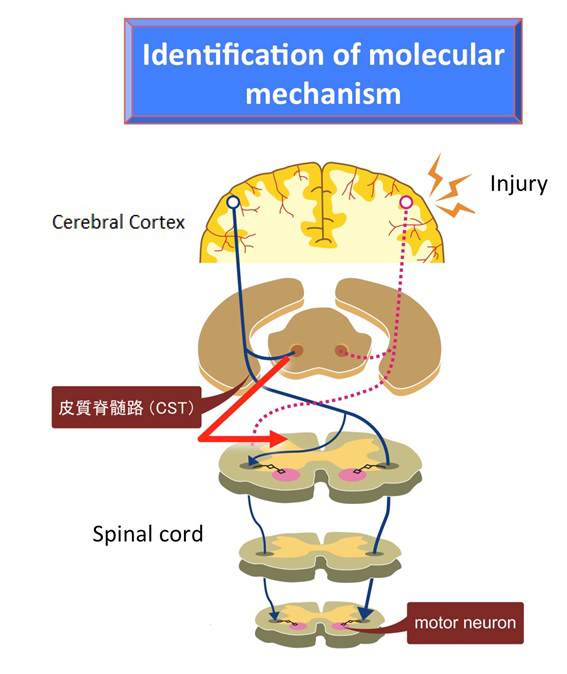Toshihide Yamashita (Osaka University)

“The plasticity of the central voluntary movement circuit following the CNS injuries”
In this study, the objective is to clarify the mechanism controlling the plasticity of the central voluntary movement circuit. In studies until now, after central nervous system damage, we have clarified that the corticospinal tract to control the motor function forms a side branch at the level of the cervical spinal cord from axons that have escaped damage and forms new circuits to interneurons. Further, the reorganization phenomenon of motor nerve circuits to establish a system in vivo to clearly evaluate and identify molecules involved in plasticity control of neural circuits. From the above study, we were able to answer to some extent the question of how the corticospinal tract forms the lower pathway leading to peripheral nerves. In this study, first by using a neural repair model after brain disorder, we will conduct the elucidation of the mechanism of neuronal circuits of the upper level to control the plasticity of voluntary movement nerve circuits. In the first year, we will verify the possibility that dopaminergic meso-cortical projection produces the plasticity of the primary motor cortex and further conduct the analysis of the mechanism. By meso-cortical projection to form a synapse in the corticospinal tract neurons, in order to answer the question of whether the plasticity of the corticospinal tract is induced, we will verify using the technology of the meso-cortical projection specific inactivation. In the second year, based also on the foundation of the results of CREST research to be completed in the previous year, we will comprise the upper and lower corticospinal tract, and in an integrated manner, approach how to achieve the plasticity changes in the voluntary movement system. More specifically, over time and comprehensively analyzing the gene expression changes in the corticospinal tract neurons after unilateral brain disorders, we will identify the molecules necessary for plasticity control of the corticospinal tract. By clarifying the molecular mechanisms that controls voluntary movement circuit in vivo, we make the objective to elucidate the mechanism of neural reorganization in adults. By applying the obtained results and strengthening the mechanism to induce the plasticity of the corticospinal tract, we make the final objective to find the molecular target to effectively improve motor dysfunction.
Recent Publications
1. Ueno, M., Fujiki, R. and Yamashita, T. (2014) A selector orchestrates cortical function. Nat. Neurosci. 17: 1016-1017.
2. Ueno, M., Fujita, Y., Tanaka, T., Nakamura, Y., Kikuta, J., Ishii, M. and Yamashita, T. (2013) Layer V cortical neurons require microglial support for survival during postnatal development. Nature Neurosci. 16: 543-551.
3. Muramatsu, R., Takahashi, C., Miyake, S., Fujimura, H., Mochizuki, H. and Yamashita, T. (2012) Angiogenesis induced by CNS inflammation promotes neural remodeling through vessel-derived prostacyclin. Nature Medicine 18: 1658-1664.
4. Muramatsu, R., Kubo, T., Mori, M., Nakamura, Y., Fujita, Y., Akutsu, T., Okuno, T., Taniguchi, J., Kumanogoh, A., Yoshida, M., Mochizuki, H., Kuwabara, S. and Yamashita, T. (2011) RGMa modulates T cell responses and is involved in autoimmune encephalomyelitis. Nature Medicine 17: 488-494.
Posted:2016/03/10

